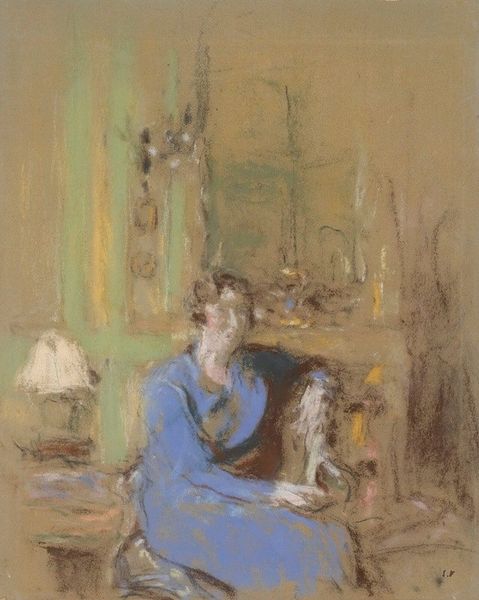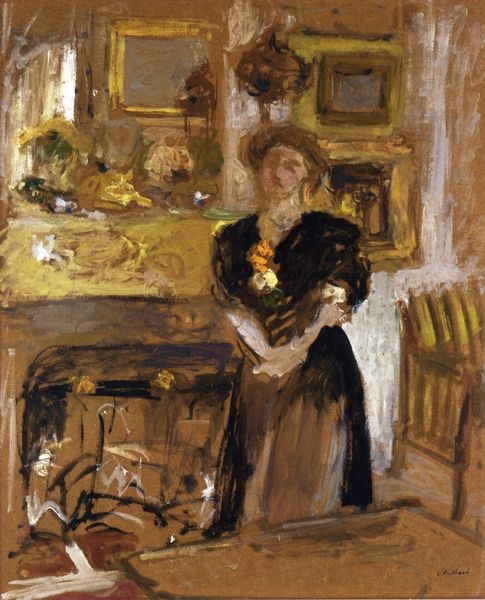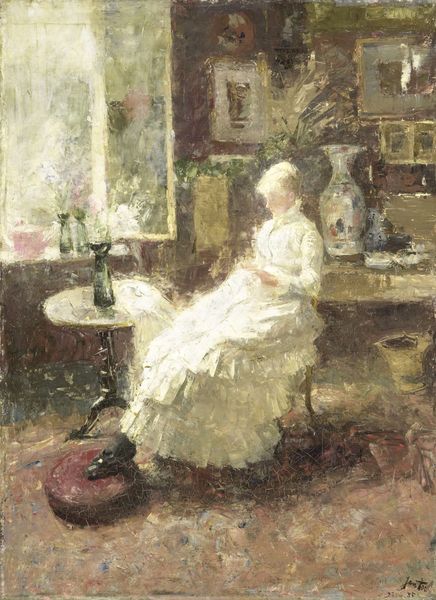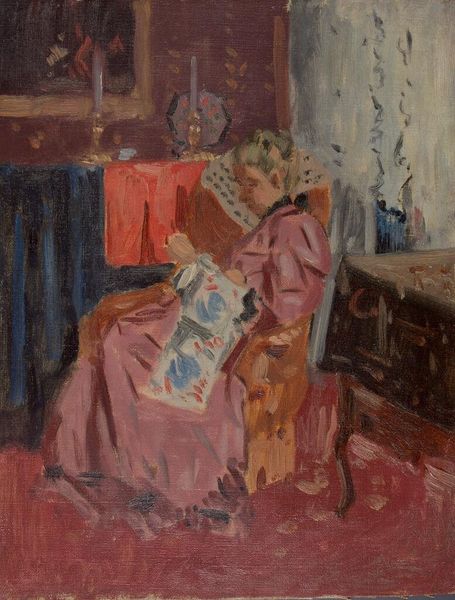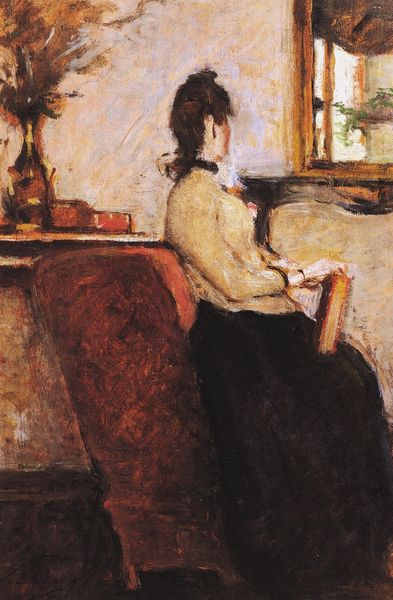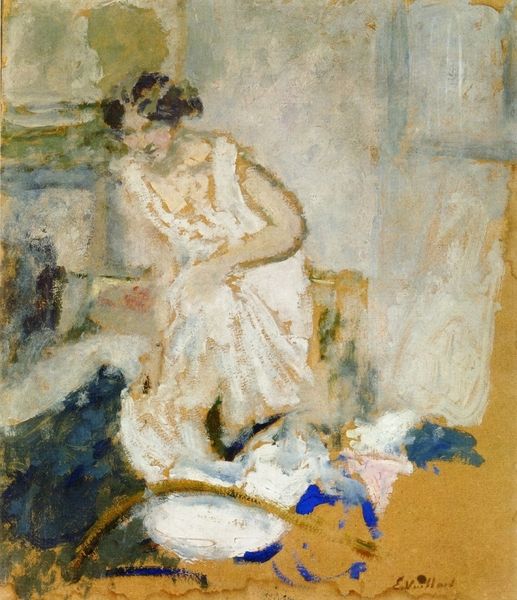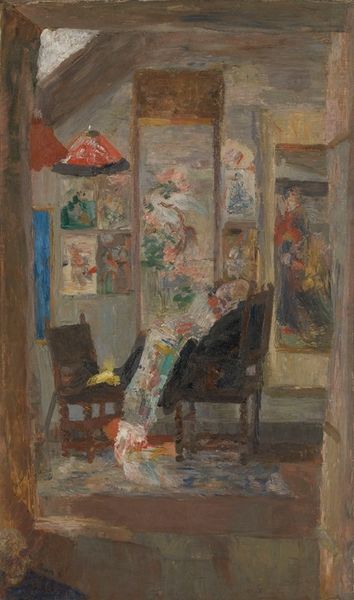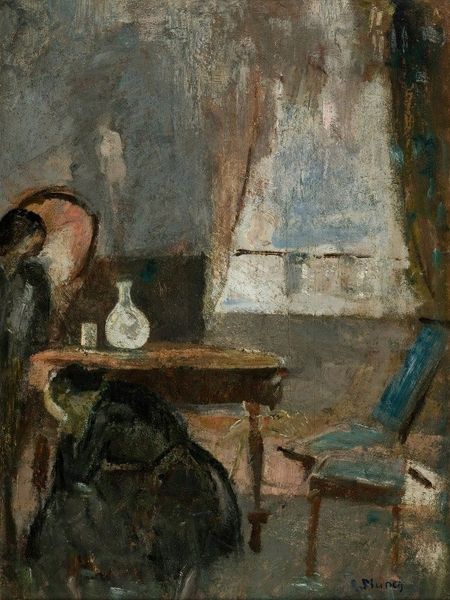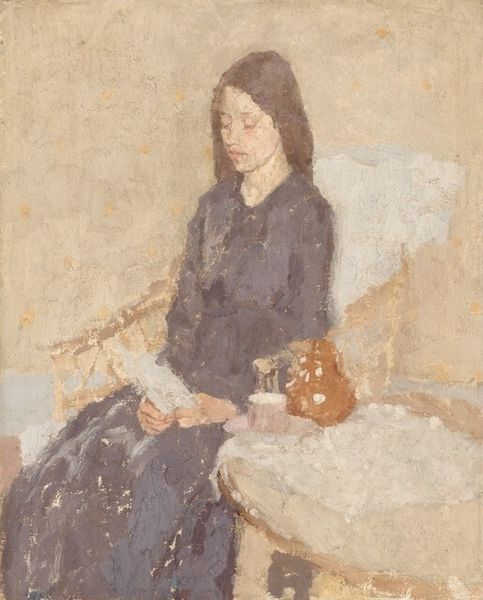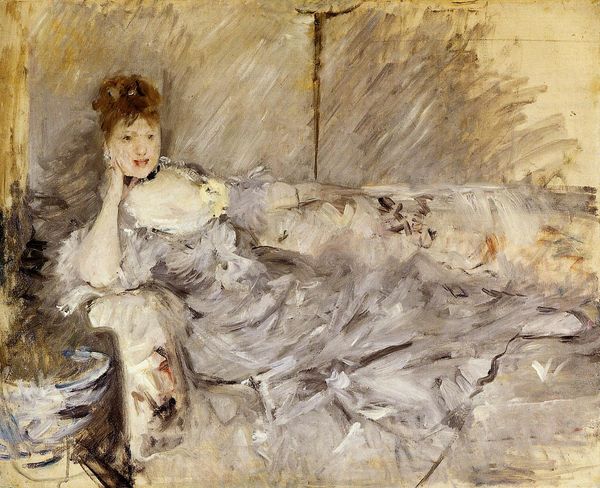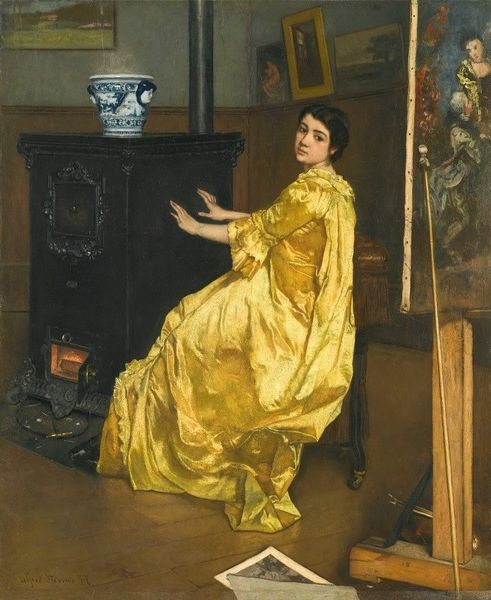
gouache, watercolor
#
portrait
#
gouache
#
figurative
#
impressionism
#
gouache
#
figuration
#
watercolor
#
intimism
#
watercolor
Copyright: Public Domain: Artvee
Curator: This is James McNeill Whistler's "The Yellow Room," created circa 1883-1884 using watercolor and gouache. Editor: The light seems muffled, like sunlight filtering through heavy drapes on a dreary afternoon. The composition feels incredibly intimate. Curator: The intimacy stems from Whistler’s focus on domestic spaces, capturing a moment of quiet contemplation. Consider how he employs diluted paints—the materiality feels light, almost fleeting, blurring the boundary between interior and impression. Editor: Absolutely. And this piece seems so radically modern in its suggestion rather than explicit depiction, like a sketch capturing the ghost of a room more than its tangible reality. I’m curious about the presence of the fan... it takes up much of the piece. Curator: It adds to the enigmatic aura, doesn't it? Notice how the fan mirrors the seated figure's pose, almost as if they are mirroring each other. Whistler often incorporated Oriental motifs into his works, reflecting a broader trend of Japonisme. But also remember, he's using these objects to arrange shape and color to create harmony above all else, or as he called it, "an artistic arrangement". The quality and craftsmanship of the fan—something often made by female hands, sold and commodified—speaks to labour and artistry existing in separate spheres. Editor: So it isn't just an aesthetic choice. And looking closely, I’m also struck by the subtle color palette. It's more restrained than you might expect from the Impressionists, creating a sense of delicate melancholy. There are undertones of yellow almost throughout the composition but I wouldn't immediately register the scene as overly yellow. Curator: Precisely. The understated palette amplifies the psychological depth. Whistler encourages us to linger, to consider the emotions evoked by color and form in place of grand narratives. It seems that it all comes down to pure sensory pleasure, doesn't it? Editor: Definitely, you have inspired a sense of material depth, for me! Looking beyond that primary emotion toward production and labor—thanks to you. It reminds us art is a marriage between vision and its execution. Curator: It seems there's more than one harmony worth noting here.
Comments
No comments
Be the first to comment and join the conversation on the ultimate creative platform.
